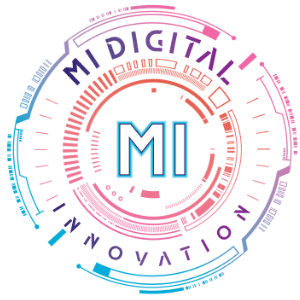You’ve got a website. You’ve got a business. But when it comes to SEO?
You might be thinking: “Isn’t that for techies? Or huge companies with teams and tools?”
Not even close.
You don’t need a tech degree, a budget, or even a ton of time to start making real SEO improvements. In fact, some of the most powerful changes you can make take just a few hours — and can completely change the way your business shows up online.
So let’s roll up our sleeves. These 7 DIY SEO tips are simple, powerful, and weekend-friendly.
- Optimize your Google Business Profile
If you’re a local business and haven’t fully set up your Google Business Profile — this is your #1 to-do.
It’s free. It’s fast. And it’s one of the first things people (and Google!) check.
What to do:
- Claim your profile at google.com/business
- Add your hours, services, business description, and photos
- Ask a few loyal customers to leave a review this weekend
- Respond to all reviews, even old ones
Why it works: When someone searches for “[your service] near me,” your profile determines if you show up on the map — and whether people trust you at first glance.
- Fix your website’s title tags and meta descriptions
These are the little snippets that show up in search results. And 90% of small biz websites don’t optimize them — which means opportunity for you.
Here’s how:
- Check what yours look like using a Chrome extension like SEO Meta in 1 Click
- For each page, create a unique title with a main keyword + location
Example: “Custom Cakes in Charleston | Sweet Bloom Bakery” - Write meta descriptions like a mini ad — include benefits and a call to action
Keep it natural. Think: What would make someone click this?
- Write one blog post answering a client question
Blogging sounds like a big deal. But really — it’s just about being helpful.
Pick one question you always get asked, and answer it in 500 words.
Some ideas:
- “How long does your process take?”
- “What makes your service different?”
- “Is [common myth] true?”
Use plain language. Add a local keyword if you can (“Charleston dog groomer explains…”).
Bonus: Share it on social and link to it from another page on your site. That’s internal linking — another SEO win.
- Make sure your website is mobile-friendly
Google now indexes your site based on its mobile version first. If your site looks weird or loads slowly on a phone — you’re losing visitors and rankings.
Quick test: Google’s Mobile-Friendly Test
What to look for:
- Is the text readable without zooming?
- Do buttons and menus work easily on a phone?
- Are popups blocking content?
If it fails the test, talk to your web designer — or explore using a mobile-optimized template if you’re DIYing.
- Add internal links to other pages on your site
This one’s super simple, but powerful.
Whenever you mention a service, blog post, or page — link to it.
Why?
- It helps Google understand how your site is structured
- It keeps visitors on your site longer
- It improves the experience for readers
Example:
If you mention “our SEO packages,” make “SEO packages” a link to your Services page.
It’s tiny… but it adds up.
- Install Google Analytics (or actually check it)
If you don’t know what’s working, you can’t improve it.
Google Analytics tells you:
- Where your traffic comes from
- What pages people visit
- How long they stay
- What they do before leaving
You can set it up through Google Analytics. Or if it’s already installed, just log in and explore.
Don’t get overwhelmed — just look for patterns. Are most of your visitors from mobile? Are they bouncing off one particular page? Start there.
- Submit your site to Google Search Console
Search Console is like Google’s way of telling you how it sees your site.
You’ll learn:
- What keywords are bringing you traffic
- What pages are indexed
- If there are any issues holding you back
To get started:
- Visit Google Search Console
- Verify your site (usually via your hosting or Google Analytics)
- Submit your sitemap (if you have one — most site builders generate one)
This step often gets skipped — but it’s a huge help in understanding and improving your visibility.
Insider Tip from Myriam:
SEO isn’t just about more traffic — it’s about better traffic. When your content and site are aligned with what your dream client is actually searching for, magic happens.
Ready to pick 2 tips and start this weekend?
Here’s what I recommend:
- Do one on-site tip (like #2 or #5)
- Do one off-site tip (like #1 or #7)
That’s enough to build momentum without burning out. And once you see how doable it is, you’ll want to keep going.
Remember — SEO isn’t about perfection. It’s about progress.
And you’ve got this.
— Myriam Imhoff
MI Digital Innovation
